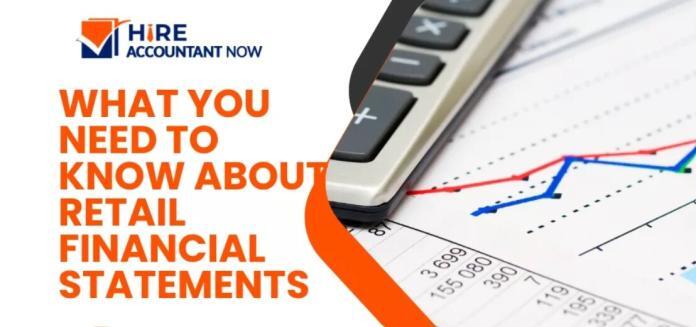Playing a pivotal role in the economy, merchandising businesses perform vital activities by purchasing and selling goods to consumers. The precise tracking and reporting of financial performance are vital for these businesses in order to make informed decisions and meet regulatory obligations. A company’s merchandise financial statements contain valuable insights into its profitability, liquidity, and overall financial status. This article aims to explore the crucial constituents of merchandising financial statements and their role in evaluating business performance.
Introduction
The merchandising financial statements give an extensive account of a company’s financial performance, position, and cash flows. These statements are developed in compliance with the generally accepted accounting principles (GAAP) and function as crucial mechanisms for investors, creditors, and a chart of accounts for a merchandising business.
Merchandising Enterprises Examined in More Detail
In the realm of commerce, merchandising enterprises procure finished goods from suppliers and subsequently vend them to consumers for financial gain. Dissimilar to manufacturing businesses, merchandisers do not create goods but rather give importance to the purchasing and selling procedure. They must carefully manage inventory, pricing, and sales to maximize profitability.
Key Components of Merchandising Financial Statements
The primary financial statements used by merchandising businesses are:
Income Statement
Summarizing revenues earned, costs incurred, and resulting profitability or losses for a designated period of time is the primary purpose of the income statement – also recognized as the profit and loss statement. Key components of the income statement for a merchandiser include:
Net Sales: This reflects the complete sales revenue obtained from selling goods. After deducting the sales returns, discounts, and allowances from the gross sales, you will arrive at its value.
Cost of Goods Sold (COGS): During a specific period, COGS signifies the direct expenses linked to the items that were sold. This covers the outlays for buying or producing the goods, delivery fees, and any additional costs directly linked to them.
Gross Profit: Gross profit is calculated by subtracting COGS from net sales. It signifies the income generated from the disposal of products prior to considering operating expenses.
Operating Expenses: Within these expenses are the various costs incurred in the routine conduct of business operations, including rent, salaries, advertising, and utilities.
Net Income or Net Loss: Net income reflects profitability as it denotes the surplus achieved by having revenues exceed expenses, while net loss signifies a deficit caused by expenses surpassing revenues.
Balance Sheet
At a given moment, the balance sheet reveals the financial condition of a company. Key components of the balance sheet for a merchandiser include:
Assets: The company owns or controls assets, which are economic resources. Cash, accounts receivable, inventory, and property serve as examples.
Liabilities: Liabilities represent the company’s debts or obligations or debts. They include debts, accounts payable, loans payable, and accrued expenses.
Owner’s Equity: The owner’s equity depicts the proprietor’s or shareholders’ claim on the company. The calculation involves deducting liabilities from assets and encompasses the initial investment as well as retained earnings.
Statement of Cash Flows
The statement of cash flows presents details regarding the cash inflows and outflows within a designated timeframe.
Operating Activities: The following section demonstrates the cash flow generated or utilized in the regular functioning of the business, comprising cash inflows from customers and outflows to suppliers and employees.
Investing Activities: The contents of this section encompass the cash movements concerning the acquisition or disposal of long-term assets like property holdings, production facilities, and equipment. Additionally included are any investments made in external companies.
Financing Activities: This section encompasses cash flows arising from activities such as taking out or settling loans, issuing or repurchasing shares, and distributing dividends.
Statement of Retained Earnings
The statement of retained earnings demonstrates alterations in the balance of retained earnings over a specific duration. The computation takes into consideration the company’s net income or net loss, dividends paid out to shareholders, and any revisions made due to accounting alterations.
Importance of Merchandising Financial Statements
Merchandising financial statements serve several important purposes:
Performance Evaluation: These statements give a comprehensive outlook on a merchandiser’s financial performance. The aim of these tools is to help management evaluate profitability, detect trends, and make informed decisions with regard to pricing, inventory management, and cost control.
Investor and Creditor Analysis: Investors and creditors rely on financial statements to evaluate the financial condition of a merchandising business as well as gauge its capacity to repay debts or generate favorable investment outcomes.
Regulatory Compliance: The preparation and presentation of accurate financial statements in compliance with relevant accounting standards and regulations is a requirement for merchandisers. Reporting financial information through financial statements helps maintain transparency and accountability with stakeholders.
Comparative Analysis: Financial statements for merchandising businesses enable meaningful comparisons over time or with competitors. They enable benchmarking and identification of areas for improvement or competitive advantage.
Interpreting Merchandising Financial Statements
To effectively interpret merchandising financial statements, consider the following:
Gross Profit Margin: When dividing gross profit by net sales, the resulting ratio is known as the gross profit margin and indicates how profitable a merchandiser’s core operations are.
Inventory Turnover: The inventory turnover ratio analyzes how efficiently a merchandiser liquidates its inventory. A higher turnover ratio suggests effective inventory management.
Accounts Receivable Turnover: The accounts receivable turnover metric assesses the efficiency of credit and collection policies for merchandisers that provide credit sales.
Return on Assets (ROA): ROA assesses the profitability generated from the company’s assets and is calculated by dividing net income by average total assets.
Conclusion
It is of the utmost importance to gather insightful information on the financial performance, position, and cash flows of a company. The financial accounts make a substantial contribution to accomplishing this goal. Stakeholders are able to comprehensively analyze performance, make well-informed determinations, and determine whether or not merchandising organizations are financially viable if they have a thorough understanding of the essential features contained in these statements and accurately discern the ratios and metrics associated with those ratios and metrics.
FAQs
What other financial ratios are relevant for analyzing merchandising businesses?
In addition to the ratios mentioned, other relevant ratios include return on equity (ROE), current ratio, quick ratio, and inventory turnover in days.
Financial statements should be prepared by merchandisers with frequency.
At the conclusion of each accounting period, merchandisers generally compile financial statements to meet their reporting obligations. The frequency of these periods can range from monthly to quarterly or even annually.
Can merchandisers use different accounting methods for inventory valuation?
The selection of inventory valuation methods is available for merchandisers who can choose between options like FIFO (First-in, First-out) or LIFO (Last-in, First-out), aligning with their preference and requisite accounting regulations.
Are cash flow statements required for all merchandisers?
Even if cash flow statements are not mandatory for every merchandising business, it is highly recommended to create them. The cash flow statements furnish important data on the company’s cash inflows and outflows, enabling stakeholders to gauge its liquidity position and capability to meet financial obligations.
What strategies can merchandisers implement to enhance their financial performance using financial statements?
By analyzing the financial statements and pinpointing areas that need enhancement, merchandisers can boost their financial performance. One possible approach is to optimize inventory management, implement measures to save costs, adjust pricing strategies, and improve sales and marketing endeavors.
You may also want to read,








